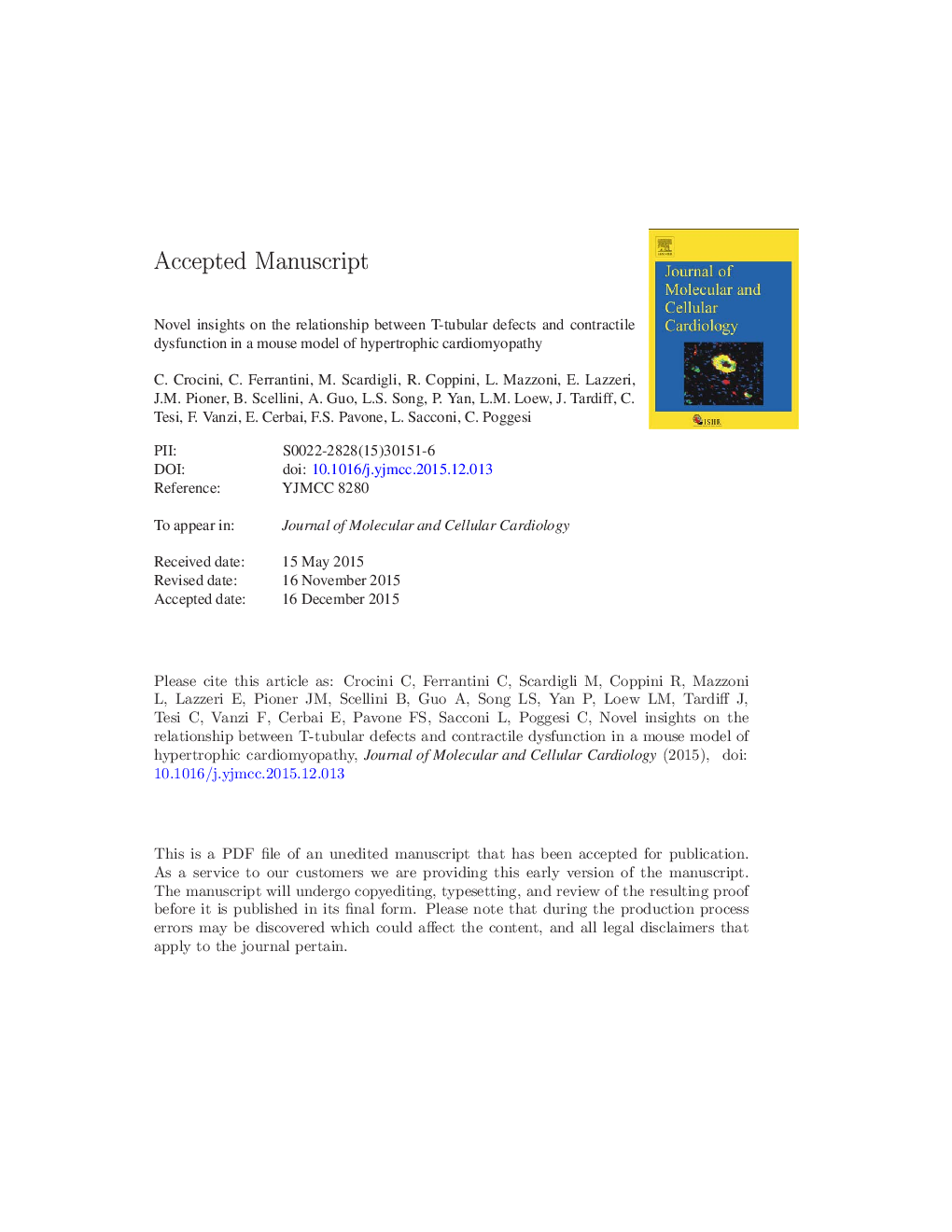| Article ID | Journal | Published Year | Pages | File Type |
|---|---|---|---|---|
| 8473952 | Journal of Molecular and Cellular Cardiology | 2016 | 25 Pages |
Abstract
Abnormalities of cardiomyocyte Ca2Â + homeostasis and excitation-contraction (E-C) coupling are early events in the pathogenesis of hypertrophic cardiomyopathy (HCM) and concomitant determinants of the diastolic dysfunction and arrhythmias typical of the disease. T-tubule remodelling has been reported to occur in HCM but little is known about its role in the E-C coupling alterations of HCM. Here, the role of T-tubule remodelling in the electro-mechanical dysfunction associated to HCM is investigated in the Î160E cTnT mouse model that expresses a clinically-relevant HCM mutation. Contractile function of intact ventricular trabeculae is assessed in Î160E mice and wild-type siblings. As compared with wild-type, Î160E trabeculae show prolonged kinetics of force development and relaxation, blunted force-frequency response with reduced active tension at high stimulation frequency, and increased occurrence of spontaneous contractions. Consistently, prolonged Ca2Â + transient in terms of rise and duration are also observed in Î160E trabeculae and isolated cardiomyocytes. Confocal imaging in cells isolated from Î160E mice reveals significant, though modest, remodelling of T-tubular architecture. A two-photon random access microscope is employed to dissect the spatio-temporal relationship between T-tubular electrical activity and local Ca2Â + release in isolated cardiomyocytes. In Î160E cardiomyocytes, a significant number of T-tubules (>Â 20%) fails to propagate action potentials, with consequent delay of local Ca2Â + release. At variance with wild-type, we also observe significantly increased variability of local Ca2Â + transient rise as well as higher Ca2Â +-spark frequency. Although T-tubule structural remodelling in Î160E myocytes is modest, T-tubule functional defects determine non-homogeneous Ca2Â + release and delayed myofilament activation that significantly contribute to mechanical dysfunction.
Keywords
Related Topics
Life Sciences
Biochemistry, Genetics and Molecular Biology
Cell Biology
Authors
C. Crocini, C. Ferrantini, M. Scardigli, R. Coppini, L. Mazzoni, E. Lazzeri, J.M. Pioner, B. Scellini, A. Guo, L.S. Song, P. Yan, L.M. Loew, J. Tardiff, C. Tesi, F. Vanzi, E. Cerbai, F.S. Pavone, L. Sacconi, C. Poggesi,
